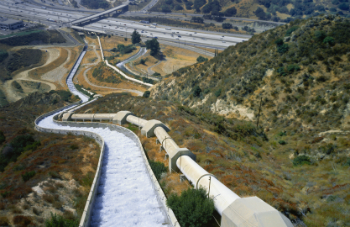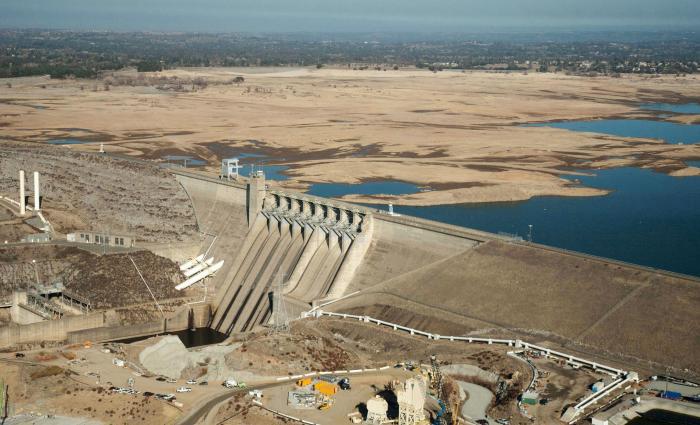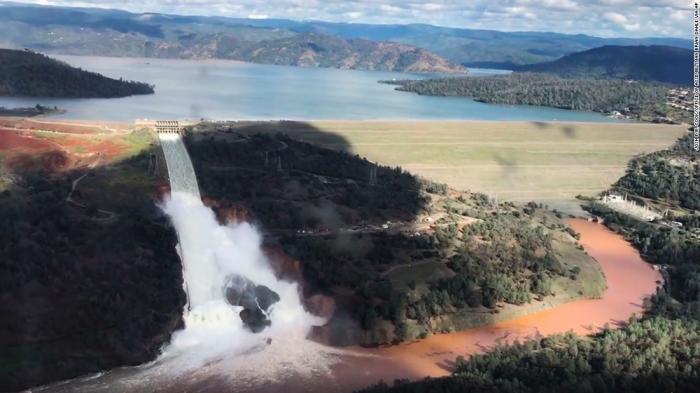We ask you, urgently: don't scroll past this
Dear readers, Catholic Online was de-platformed by Shopify for our pro-life beliefs. They shut down our Catholic Online, Catholic Online School, Prayer Candles, and Catholic Online Learning Resources essential faith tools serving over 1.4 million students and millions of families worldwide. Our founders, now in their 70's, just gave their entire life savings to protect this mission. But fewer than 2% of readers donate. If everyone gave just $5, the cost of a coffee, we could rebuild stronger and keep Catholic education free for all. Stand with us in faith. Thank you.Help Now >
California's prayers for rain - a blessing that threatens to become a curse
FREE Catholic Classes
California has recovered from one of the worst droughts in recorded history. Two years of above average rain and snow have refilled the state's reservoirs and deposited incredible quantities of snow in the Sierra Nevada. But with this blessing comes a curse.

The Los Angeles Cascade, perhaps the most famous portion of the Los Angeles Aqueduct. The Aqueduct will be tested as snow melt runs off and fills the state's flood control networks.
Highlights
Catholic Online (https://www.catholic.org)
3/31/2017 (8 years ago)
Published in Green
Keywords: California flood, snow, water, Los Angeles, dam
LOS ANGELES, CA (California Network) -- Two years ago, Californians wished for rain. They literally held prayer rallies, asking for it. Five years of drought ravaged the economy, upended agriculture, and forced entire small towns to rely on water trucks for survival.
But with every wish, there comes a curse.

At the height of the drought, reservoirs, such as Folsom Lake dropped to nearly zero.
The past two years have seen above-average rain and snow. Thirty "atmospheric river" events have hit California since October. An atmospheric river is a jet of rain that develops in the tropical Pacific around Hawaii and transports moisture to California in a long, powerful storm that can last for several days. Such a storm can deliver 14 times the amount of water as the Mississippi River.
On average, California sees four atmospheric river events per year.

Shasta Lake is just 20 feet below the crest of Shasta Dam as of March 31.
The state's reservoirs, already filled to the brim, are at capacity. That's just from all the rain; the snow hasn't begun melting yet. The state's snowpack is 164 percent above normal this year. When the snow does start to melt, it will cascade down the Sierras in torrents of water, overflowing creeks and damaging property. And that's just in the mountains.

The Oroville Dam continues to release water despite damage to its spillway.
Eventually, it will fill reservoirs, forcing dams to release as much water as possible down their spillways. In anticipation of this event, most dams are already releasing as much water as they can, hoping to lower their water levels before the snowmelt refills them.
With the taps open full blast, urban streams and canals are full. Flood control districts have their hands full with managing the water as it quickly fills small, local reservoirs. Eventually, a good portion of the state's water is let out into the ocean.
The great question is if the state's flood control infrastructure can handle the meltwater that's coming. The answer is no, and everybody knows that.
Most places will not experience any negative impacts. Farmers will appreciate the abundant supply and harvests will be good. Homeowners will water nightly to regrow their lawns. The state's aquifers will be replenished. But in some places where infrastructure has been neglected, or where bad luck will overwhelm our defenses, flooding is sure to occur.
Los Angeles Mayor Eric Garcetti has already declared an emergency because the meltwater poses a flooding risk in the Owens Valley and could damage the aqueduct. The Owens Valley is where Los Angeles gets most of its water, running off the eastern flank of the Sierras.
Californians may enjoy the snow now, but within a few months, they will pay for it in other ways. There will be floods and property damage. Lives could be lost if people are not cautious. Rivers where people commonly swim will remain swollen and dangerous all year. And worst of all, dams will be stressed to their limits as reservoirs fill to capacity.
Nobody expects catastrophe, and Californians would rather have the water than not. But there is a price to be paid for this richness, and the curse will haunt us soon.
Subscribe Now - Catholic Online YouTube
---
'Help Give every Student and Teacher FREE resources for a world-class Moral Catholic Education'
Copyright 2021 - Distributed by Catholic Online
Join the Movement
When you sign up below, you don't just join an email list - you're joining an entire movement for Free world class Catholic education.
- Advent / Christmas
- 7 Morning Prayers
- Mysteries of the Rosary
- Litany of the Bl. Virgin Mary
- Popular Saints
- Popular Prayers
- Female Saints
- Saint Feast Days by Month
- Stations of the Cross
- St. Francis of Assisi
- St. Michael the Archangel
- The Apostles' Creed
- Unfailing Prayer to St. Anthony
- Pray the Rosary
![]()
Copyright 2025 Catholic Online. All materials contained on this site, whether written, audible or visual are the exclusive property of Catholic Online and are protected under U.S. and International copyright laws, © Copyright 2025 Catholic Online. Any unauthorized use, without prior written consent of Catholic Online is strictly forbidden and prohibited.
Catholic Online is a Project of Your Catholic Voice Foundation, a Not-for-Profit Corporation. Your Catholic Voice Foundation has been granted a recognition of tax exemption under Section 501(c)(3) of the Internal Revenue Code. Federal Tax Identification Number: 81-0596847. Your gift is tax-deductible as allowed by law.









